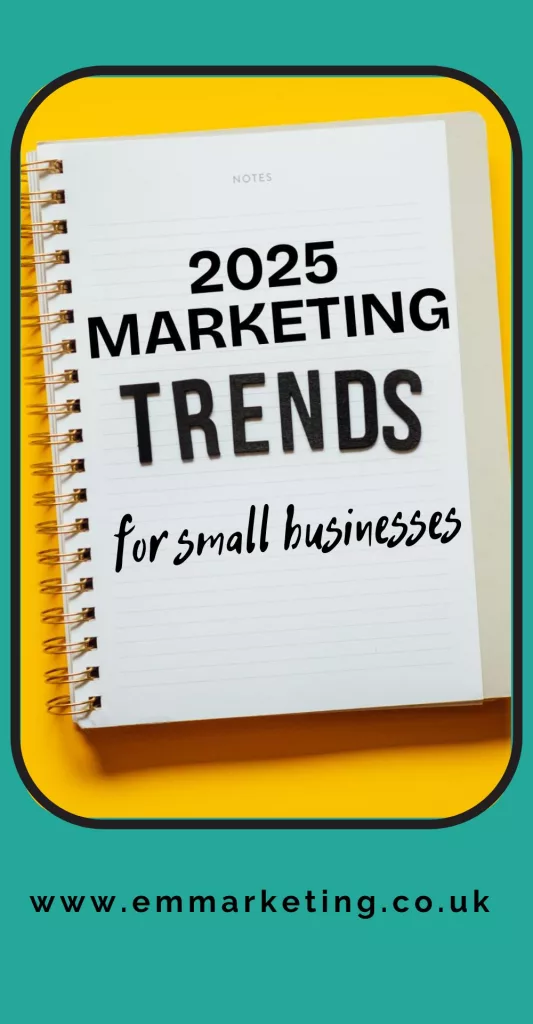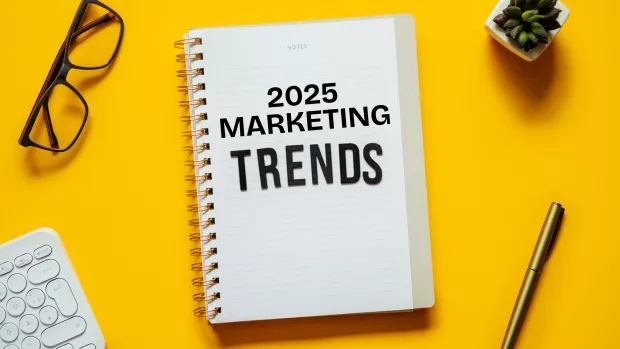Table of Contents
Introduction
I’ll admit that I’m not one for jumping on the latest trends, whether in marketing, technology, or even what I should or shouldn’t be watching, listening to, wearing, or eating for my lunch! I much prefer to take a step back, do my research, and only dive in when I’m certain something is a good fit for me. However, that doesn’t mean I don’t like to have an awareness of what the latest marketing trends are, because sometimes, when the time is right, you have to dive in quickly.
It’s already been an eventful start to the year—Instagram has rolled out several updates, TikTok went dark for a while, and discussions around WordPress are ongoing. But platforms are just one piece of the marketing puzzle—your audience is another. Instagram may be rolling out 3-minute reels, but does your audience want longer-form video content?
Here’s my take on the key 2025 content marketing strategies and trends for small businesses: what’s worth focusing on and what’s not.
Leverage all your channels: don’t forget your blog
Many small businesses rely on a single channel, like social media, to market their business. This often stems from a lack of resources, knowledge of other channels, or simply time constraints. However, if the TikTok ban has taught us anything, it’s not to put all our marketing eggs in one basket. If you’re relying entirely on social media to promote your business and Meta suddenly shuts down, what will you do?
Use my marketing triangle
Equally, people are consuming more content than ever before, and across more platforms. That’s why I recommend small businesses use a combination of channels: email marketing, your website, and social media. I call this my version of the “marketing triangle,” because these three channels work really well together. You can repurpose content across them (essential for busy small business owners), direct traffic from one to the other, and build a loyal following on three different platforms.
A recent study suggested that at least 50% of your marketing content should focus on awareness—this includes blog posts, social media, and emails. The remainder should target the consideration and decision-making phases of the customer journey, where you dive deeper into educating your audience. This is where longer-form videos, webinars, and similar content could come into play. So blog posts, social media, and email are not only the foundation of your marketing but where you should be spending a considerable chunk of your time.
Blogging isn’t dead; it’s still great for SEO
As a small business, I understand it’s challenging to manage multiple channels, but as I mentioned above, repurposing content is key. For example, I often start with a blog post and then repurpose that content into social media posts and emails. And contrary to popular belief, blogging isn’t dead. In fact, with visual search engines like Pinterest continuing to gain traction, blogs are more relevant than ever. Over time, blogs can provide incredible SEO benefits, raise awareness, and, best of all, are cost-effective. Unlike social media, they have a long lifespan, so it’s time well spent.
Prioritise quality over quantity: update your content
While blog posts have great longevity, their impact can be extended further by keeping them updated. As a small business owner, the thought of revisiting and updating content might seem overwhelming, but studies show that long-term growth is achieved not just by creating new content but by refining and refreshing existing content. Because content creation isn’t about creating as much content as you possibly can with no regard for the quality. If you spend half your time creating new content and the other half updating it, you’ll not only save yourself time, but you’ll also see growth. Updating is a trend you’ll see me adopting this year.
My advice is to revisit your blog posts each quarter when planning your next 3 months of content and see what you can update before you create anything new. This could be changing the title to something more relevant, updating the copy, or making it more reader-friendly.
Likewise, revisit your social media posts quarterly to evaluate which performed well. From those that did, if they’re still relevant, give them a refresh and repurpose them. A marketing plan is essential for this, and I’ll be sharing a free template for that soon.

Use long-tail keywords to answer your audience’s questions
Long-tail keywords remain an incredibly effective strategy for attracting a more targeted audience. People are increasingly using search engines like Google, AI, and Pinterest to ask detailed questions. Where users once searched with a few short words, they’re now typing longer, more specific phrases. It’s time to dig deeper into researching these long-tail keywords. Doing so not only boosts your SEO but also attracts better-targeted traffic aligned with your niche.
Short-form videos: the rising trend you can’t ignore
Short-form video content is rapidly gaining traction, driven by our increasingly shorter attention spans. Embracing this trend could significantly enhance your reach because short videos are great at grabbing attention. Use them to do that, and then guide your audience to your longer-form content, like blogs, to continue their journey.
This rise in short-form content popularity is why I’m not sure 3-minute Instagram reels are needed. Go back a few years, and we had IGTV (remember that?). I posted many long videos there for my previous business, and the average watch time was about 30 seconds. Bear in mind that watch time is one of the ranking measures Instagram uses. If people only watch 30 seconds of your 3-minute reel, the algorithm may actually penalise you for using these new longer reels. Not to mention there are other more effective platforms you can use if long-form videos are what your audience prefers. Also, Google and other search engines are beginning to recognise shorter videos, so they now appear in search. My advice is to play around and find the perfect length for your audience, and be sure to add things like text, captions, and images to keep them watching.
AI-generated content: find the right balance
AI is here to stay, and it’s an excellent tool for helping with content creation. I always encourage small businesses to use AI for assistance because it can save a lot of time. Whether it’s structuring blog posts or brainstorming ideas. However, it’s essential not to rely on it entirely. While AI-generated content is one of the fastest growing right now, Google and other platforms use algorithms designed to evaluate the quality and relevance of content, so if you use content solely created with AI without adding value, it may fall flat. Use it, but find the right balance.
I often use it to help me structure blog posts (much easier than starting with a blank page). Using the structure, I write the body of the copy and then run it through AI to refine it. That way, I’m not only adding the human touch but also writing in my tone of voice, so my content reflects my brand personality.
Conclusion
At the heart of all these different platforms and channels is your customer. You are creating content for them, so regardless of what is and isn’t trending, make sure your content is relevant to them and focused on serving their needs. Answering their questions and using subheadings, captions, and other user-friendly elements will improve the customer experience and also boost your rankings on platforms.
2025 will undoubtedly continue to bring shifts in the marketing landscape, but the core principles of marketing remain the foundation of success in any campaign. Know and understand your audience, use the right channels, and provide valuable, customer-focused content. Don’t be afraid to embrace new opportunities, but only if they are right for you and your audience.
If you’re ready to take your marketing to the next level but need some help, drop me a message by clicking here, and we’ll work on it together. You’ll also find me sharing tips on Instagram.


Leave a Reply